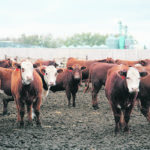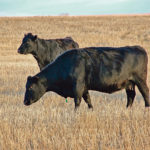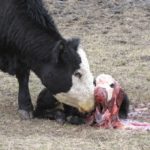It has been a relatively busy spring for our Disease Investigation Unit at the Western College of Veterinary Medicine in Saskatoon. The cases we’ve seen include scenarios of lead toxicity, abortions and several cases of unusual disease syndromes in young calves including neurological disease and blindness. After years of being involved in various disease outbreaks […] Read more
Stories by John Campbell, DVM, DVSC
Diagnostic laboratories play important role in livestock agriculture
Many of us have changed how we meet with people during the COVID-19 pandemic, and the veterinary community is no exception. Many summer conferences that veterinarians normally attend to keep up on the latest updates in their field are being cancelled or in some cases transitioned to online meetings. Recently, I was involved in a […] Read more
Problems arise in control of external parasites in beef cattle
External parasites, such as biting or sucking lice, create an obvious problem with cattle. All lice cause irritation and this irritation causes rubbing, licking, itching and hair loss. Itchy cattle will rub on fences, buildings, trees and other fixtures and can even damage these structures. It seems to be occurring more frequently despite the frequent […] Read more

Lameness major reason for antibiotic use in feedlot cattle
Foot rot is one of the most common reasons a cow-calf producer will treat a cow with antibiotics. In 2019, Dr. Cheryl Waldner and co-workers at the Western College of Veterinary Medicine in Saskatoon published a paper on antimicrobial use in western Canadian cow-calf herds in the Canadian Veterinary Journal. Lameness was the top reason […] Read more
Social distancing common when managing calf health
Social distancing and self-quarantine are two new terms that have come into use with the COVID-19 pandemic. While these practices have become central to everyday life, the concepts are not new to those who deal with young calves. Although we can’t make sure that every animal stands two metres away from its immediate neighbour, we […] Read more
Greenfeed may be linked to milk fever
Cattle producers faced many challenges with forage and crop production last year. Many areas had poor hay crops and the weather didn’t co-operate at harvest for many grain crops. As a result, many beef cattle herds have relied heavily on baled cereal crops, such as oats or barley, as a major component of their winter […] Read more
Venereal disease often linked to open cows but tricky to diagnose
I recently had discussions with a cow-calf rancher and his veterinarian about a significant open cow problem. The herd had a group of cows with close to 40 percent of the group diagnosed as open at pregnancy checking. The veterinarian and the producer tried to diagnose the problem without much success. The problem did not […] Read more

New study points finger at pen-mates infected with BRD
Bovine respiratory disease is one of the most important economic diseases in the beef cattle industry. It is almost overwhelming trying to keep up with the publications devoted to this subject. There are numerous studies on the microbial flora of the nasal passages of cattle, antimicrobial resistance surveys, vaccination trials, therapy studies and many others. […] Read more

Testing beef herds for Johne’s disease can be difficult
Every year, I seem to write another article about Johne’s disease. It is one of the most common topics of phone calls and questions that I receive from veterinarians and producers. Johne’s disease is a relatively easy disease to diagnose in an individual cow either via clinical signs or at post mortem. The characteristic symptoms […] Read more

Reduced weaning stress is important goal for producers
If you drive into many small towns on the Prairies with a livestock auction yard at this time of year, you might be greeted by the chorus of bawling calves. Most of these calves are headed to feedlots after being recently weaned at their home ranches. Weaning is a stressful event for calves and it […] Read more




